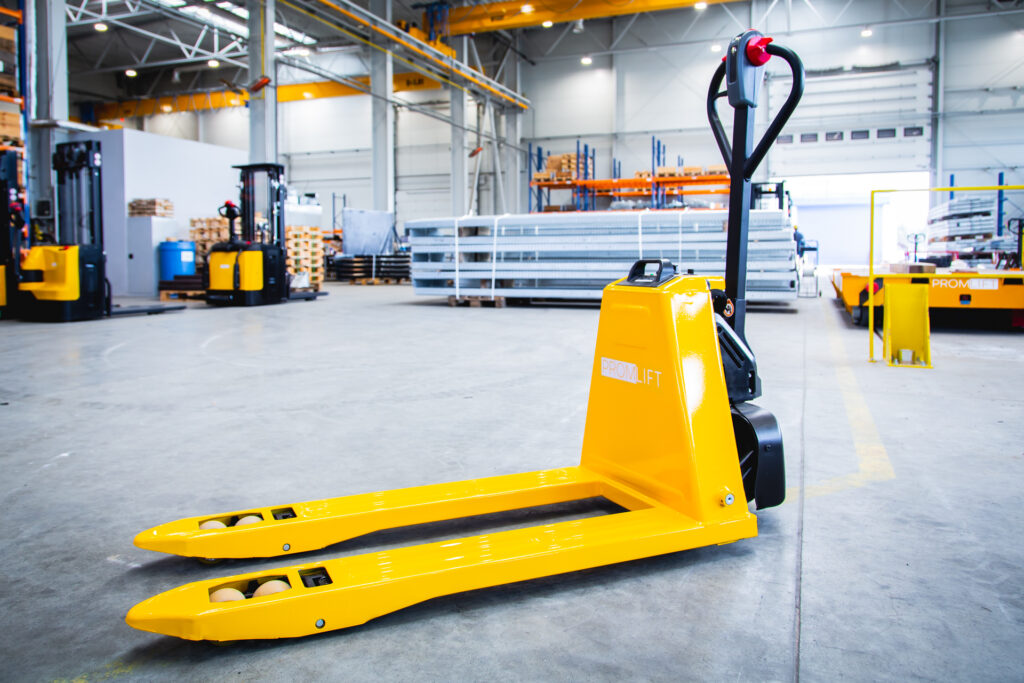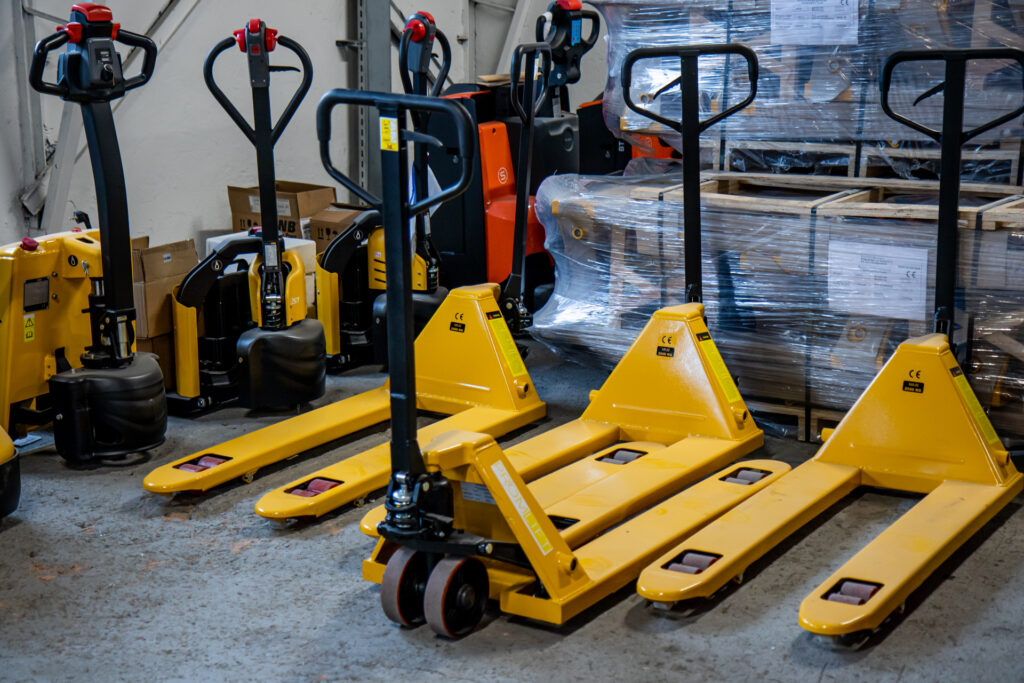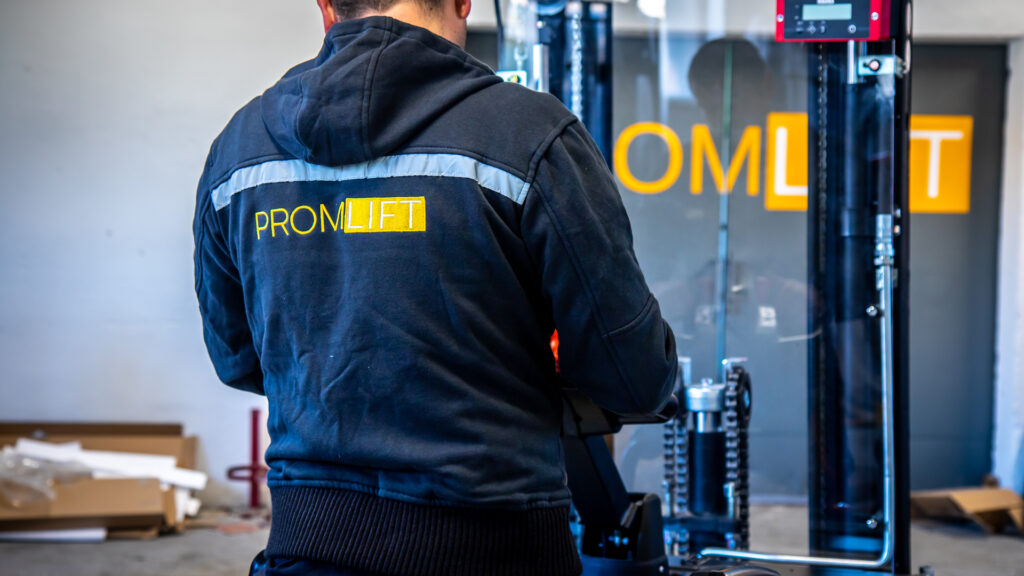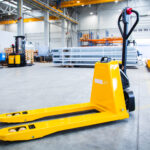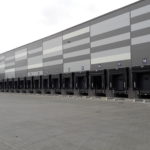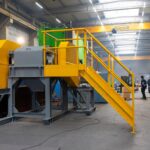According to the dictionary, the pallet truck is a manual forklift intended for material handling. This is probably the most popular type of forklift that each of us knows and recognizes. Do you need a pallet truck in your company? Where to buy such a device? You will find out in the text below.
In order to make the right choice of a forklift, you should seek the advice of experienced specialists in the warehouse equipment industry, which includes the specialists of the Promlift brand. Also in the Promlift online store you can find many models of forklifts – both pallet and lift trucks. Cooperation with a company that is trusted by the market eliminates most of the risk associated with the purchase of a truck and allows you to select the equipment appropriate to the customer’s needs.
What are pallet trucks?
A popular pallet truck is a lifting hand pallet truck, which is mainly used to move loads placed on pallets over short distances, as well as to lift them up to a maximum of 20 centimeters. Due to the lifting height, this type of forklift is referred to in the Polish ISO Standards as lifting pallet trucks – and not, as it is often incorrectly referred to, as lift trucks. This is because lift trucks are used to lift pallets with a load to greater heights, for example in order to stack a pallet on a rack.
The operation of hand pallet trucks is based on a hydraulic mechanism. In order to change the position of the transported load, the truck operator pivots the drawbar, thanks to which he regulates the pressure of the hydraulic oil in the mechanism, lifting the load. The load is lowered by pressing the lever on the drawbar.
Manual pallet trucks are not supervised by the Office of Technical Inspection and their use does not require specialist qualifications. The world’s first hand pallet truck was built in 1947 by the Swedish company BT Industries.
Where are pallet trucks used?
This type of forklift is most often seen in supermarkets and larger shops. It is used to transport goods between the warehouse serving the facility and store shelves. Pallet trucks are also used in warehouses and wholesalers, on delivery trucks and production lines, and wherever it is necessary to transport loads over short distances.
Construction and types of pallet trucks
Standard pallet trucks consist of a truck body with forks of various length, width and spacing; drawbar and pumps. Single or double rollers can be attached to the end of the forks. Transport rollers and wheels are most often made of polyurethane, nylon or rubber and can have different diameters. The comfort of using the stroller and its maneuverability depend on the quality and structure of these elements.
The main feature that differentiates pallet trucks is the lifting capacity and the length of the forks. Typically, these devices can carry loads of up to 2.5-3 tons. Depending on the load capacity and purpose, the forklift trucks can have different fork lengths – most often from about 80 to 150 cm or more. The smaller the fork spread, the more manoeuvrable the loaded truck will be. It is assumed that the standard spacing is 52–55 cm, the wide spacing is 68 cm, and the narrow one is 14–45 cm. The minimum height of the forks is 8–9 centimeters, the maximum is 20 centimeters.
Advantages and disadvantages of pallet trucks
The basic advantages of hand pallet trucks include their small dimensions and handiness, which is invaluable in small operating spaces. They are also relatively cheap trucks, with which the entrepreneur does not incur additional costs of inspections or specialist training for their employees. It is hard to find a more universal and easy-to-use warehouse equipment.
Among the disadvantages of this type of trucks, we can mention the limitations resulting from their construction, which relate to the type, weight and height of maneuvering the transported goods. We can only use them for low and close storage. Due to the lack of an engine and cushioning, these trucks are not suitable for transport on more difficult terrain, e.g. on sloping and uneven surfaces. Their use also requires considerable physical force – first to pump the lift and second to pull the load. For this reason, working with them for longer periods can be exhausting and uncomfortable.

